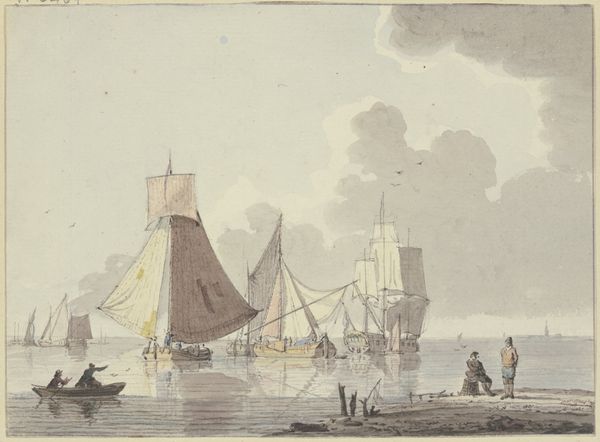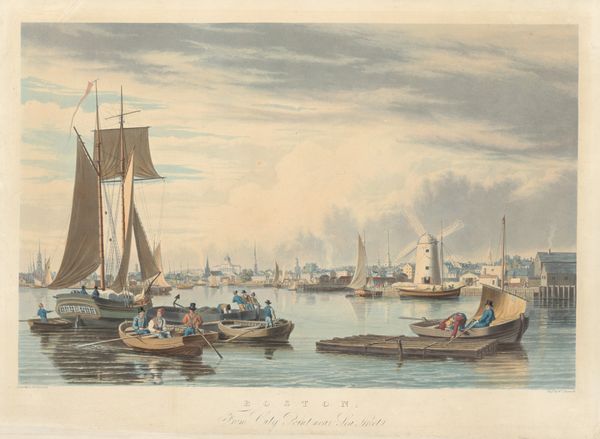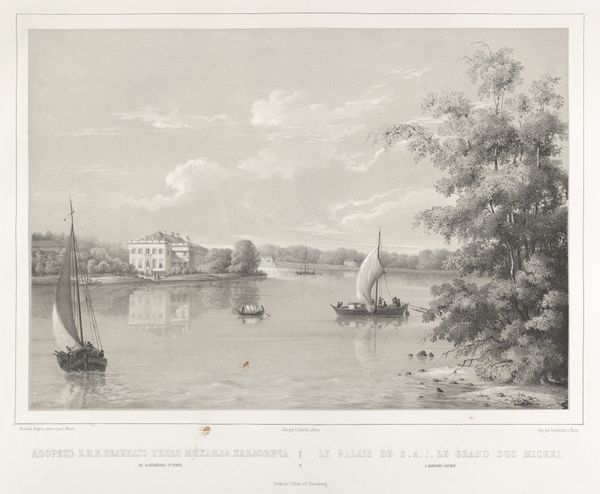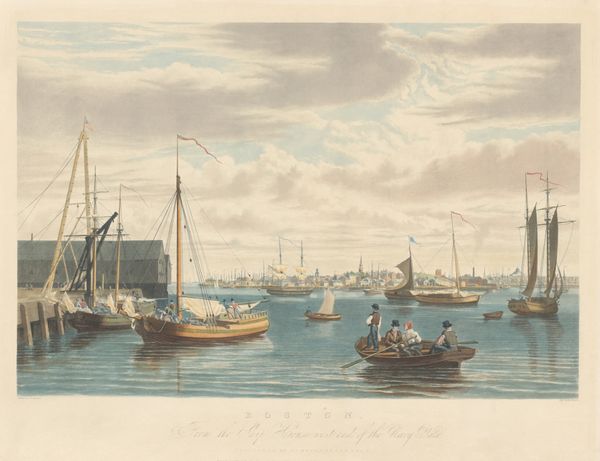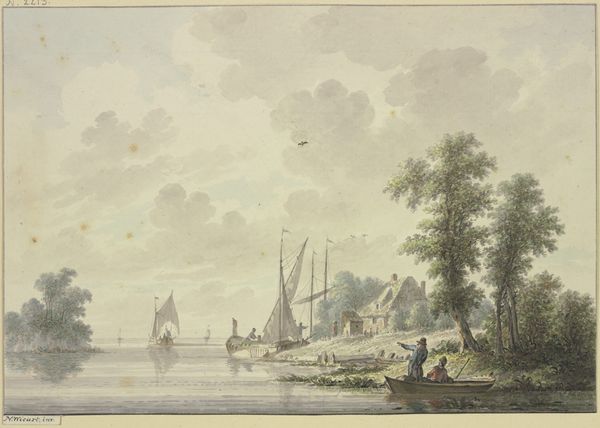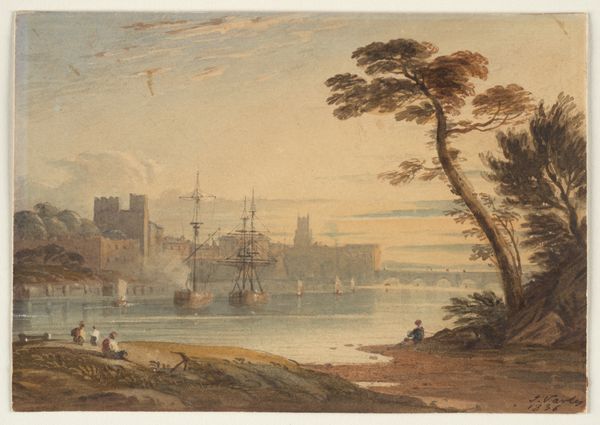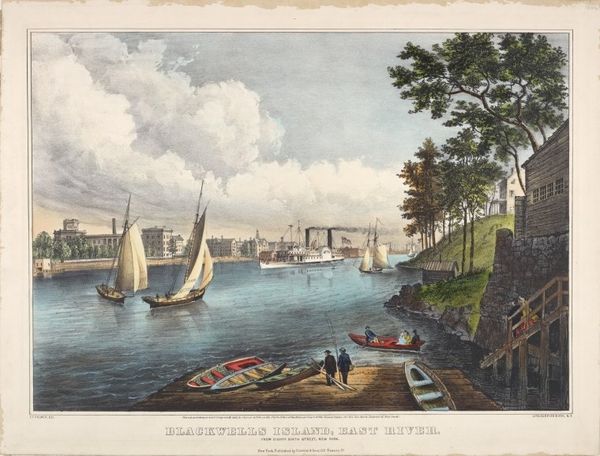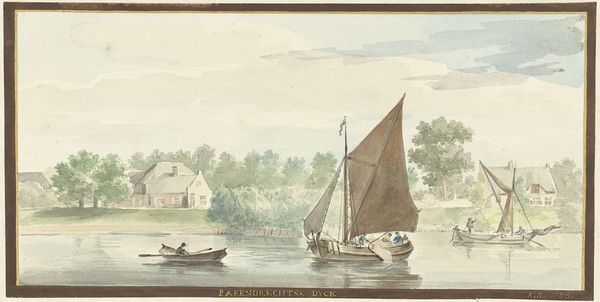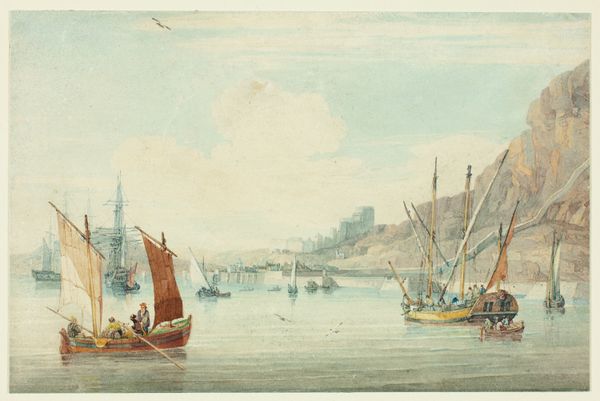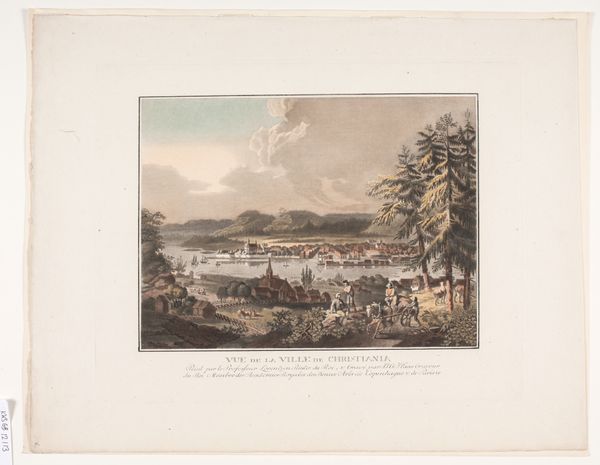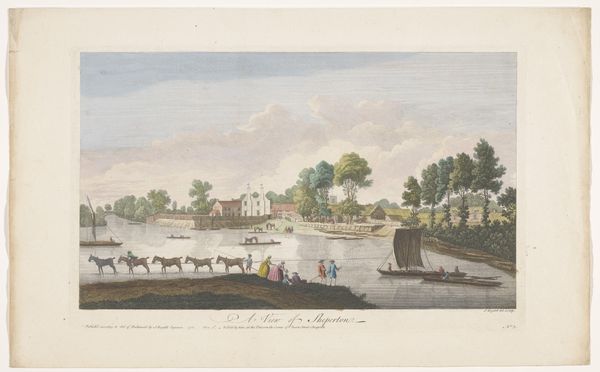
Troy: Taken from the West Bank of the Hudson in front of the United States Arsenal Possibly 1838
0:00
0:00
print, etching, watercolor
# print
#
etching
#
landscape
#
watercolor
#
romanticism
#
hudson-river-school
#
cityscape
#
watercolour illustration
Dimensions: sheet (trimmed within plate mark): 49.5 x 70.7 cm (19 1/2 x 27 13/16 in.)
Copyright: National Gallery of Art: CC0 1.0
William James Bennett created this print of Troy, New York using aquatint, a printmaking technique that mimics the effect of watercolor. To make an aquatint, the artist coats a metal plate with resin, creating a textured surface. Acid is then used to bite into the plate, producing tonal variations when inked and printed. Here, the aquatint beautifully captures the hustle and bustle of a busy port city on the Hudson River. Look closely and you’ll notice the details – the billowing sails of the ships, the smokestacks of the factories, and the figures strolling along the shore. Each of these elements required careful manipulation of the aquatint process to achieve the desired effect. Bennett's print demonstrates the skill required to transform industrial materials into fine art. By emphasizing the materiality and making process, we gain a deeper understanding of the labor, politics, and consumption that shaped the artwork. It challenges the traditional distinction between fine art and craft, urging us to appreciate the artistry inherent in printmaking.
Comments
No comments
Be the first to comment and join the conversation on the ultimate creative platform.


